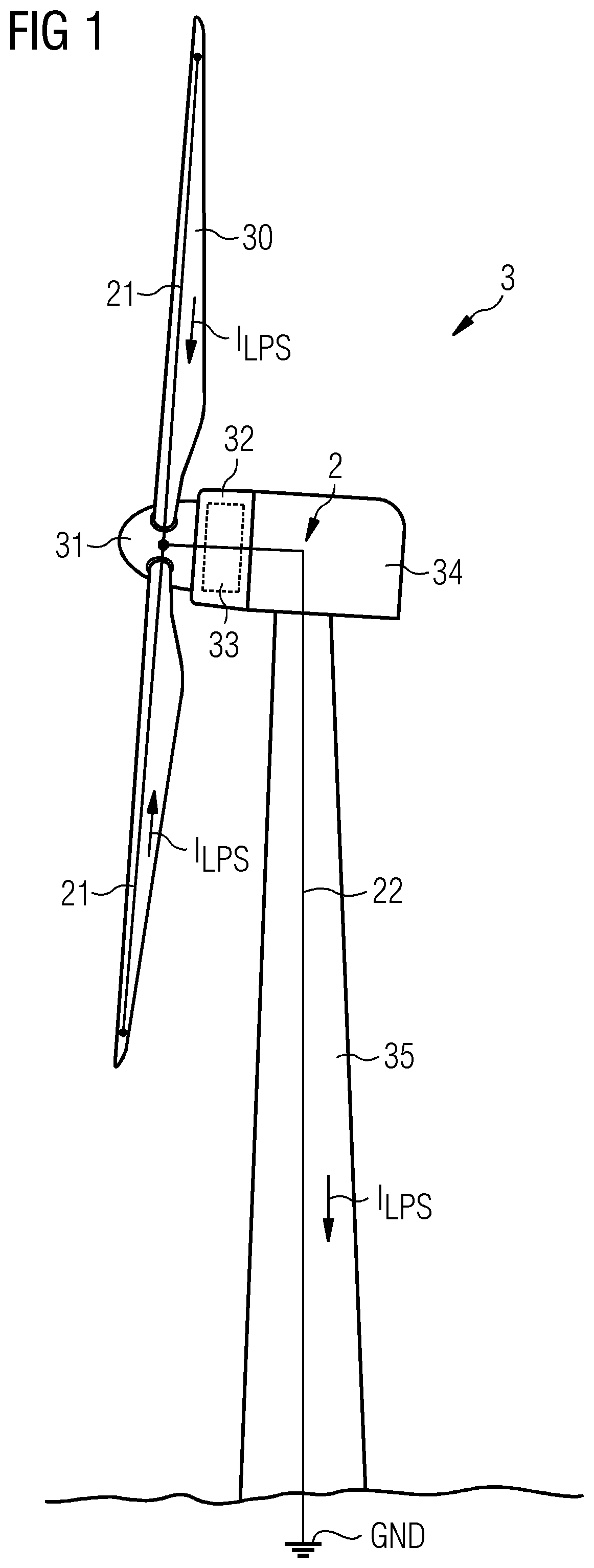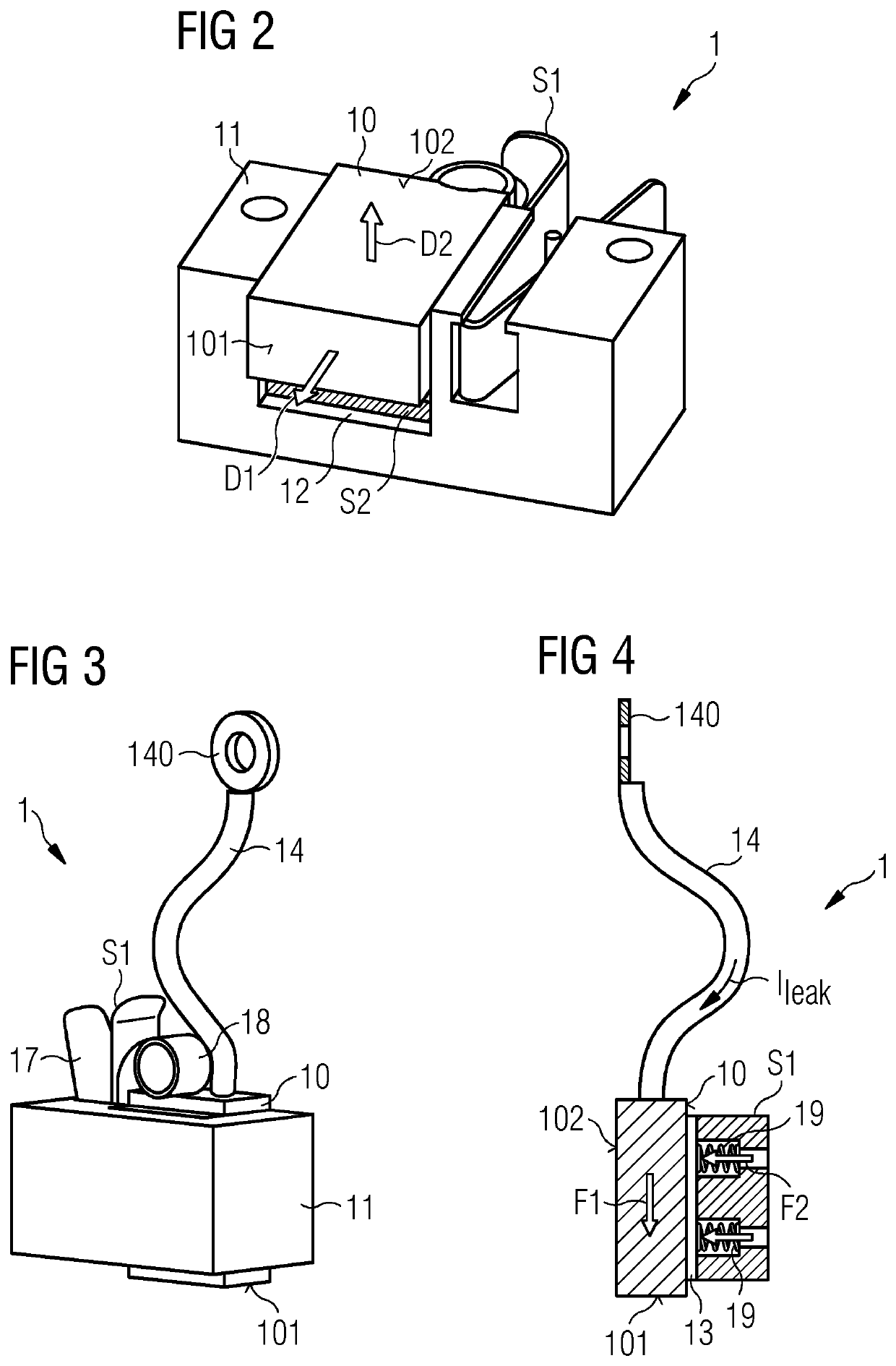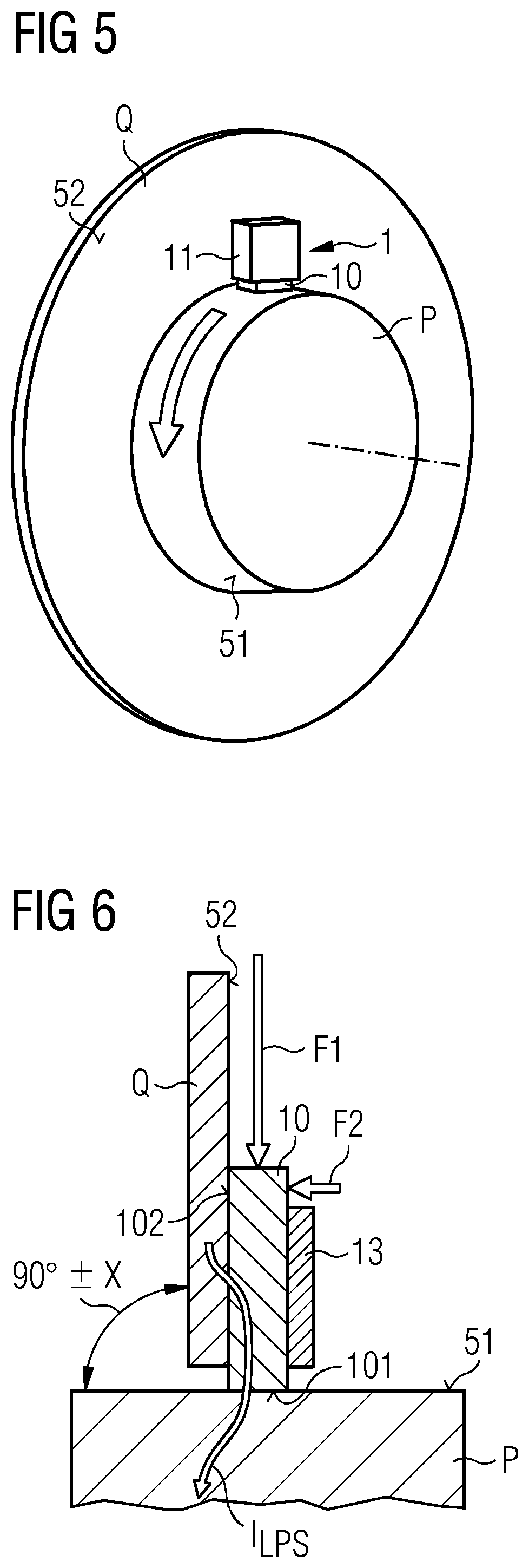Brush assembly
a brush and lightning protection technology, applied in the direction of wind energy generation, motors, rotary current collectors, etc., can solve the problems of inconvenient assembly, inability to incorporate conventional brushes, and generator design subject to additional constraints
- Summary
- Abstract
- Description
- Claims
- Application Information
AI Technical Summary
Benefits of technology
Problems solved by technology
Method used
Image
Examples
Embodiment Construction
[0035]FIG. 1 is a simplified diagram of a direct-drive wind turbine 3 and its LPS 2. The aerodynamic rotor of the wind turbine comprises the rotor blades 30 mounted to the hub 31. The outer rotor 32 of the generator can be enclosed in a housing that rotates as one with the outer rotor 32. The diagram also shows a stationary canopy 34 or nacelle 34. The stator 33 of the generator is mounted in some way to a bedframe or fixed support, and connected to the rotor 32 by means of a bearing arrangement. The stationary part of the wind turbine 3 is mounted by means of a yaw interface at the top of a tower 35.
[0036]To safely conduct lightning current to ground, each rotor blade 30 is equipped with a number of receptors connected to a down conductor of a current path arrangement 21. A rotor blade down conductor is arranged in the interior of the blade 30. All down conductors of this current path arrangement 21 can convene in the hub 31, and the lightning current ILPS is transferred by an embo...
PUM
 Login to View More
Login to View More Abstract
Description
Claims
Application Information
 Login to View More
Login to View More - R&D
- Intellectual Property
- Life Sciences
- Materials
- Tech Scout
- Unparalleled Data Quality
- Higher Quality Content
- 60% Fewer Hallucinations
Browse by: Latest US Patents, China's latest patents, Technical Efficacy Thesaurus, Application Domain, Technology Topic, Popular Technical Reports.
© 2025 PatSnap. All rights reserved.Legal|Privacy policy|Modern Slavery Act Transparency Statement|Sitemap|About US| Contact US: help@patsnap.com



